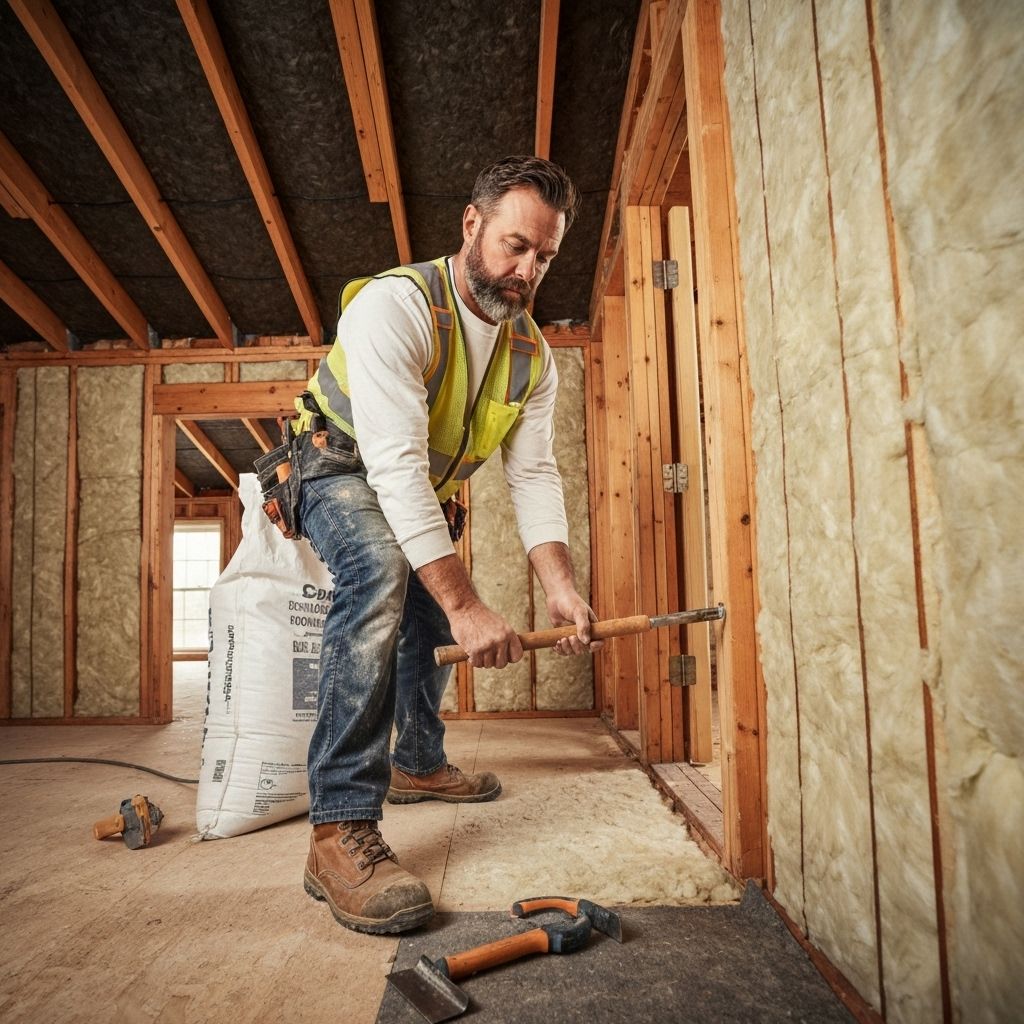Green Insulation: Sustainable Choices for a Greener Home

In the current era, where eco-consciousness is on the rise, it is more important than ever to make sustainable choices at home. A key decision you can undertake is the insulation methods you choose for your house. Proper insulation not only increases comfort but also plays a significant role in reducing energy consumption and minimizes your carbon footprint. With various eco-friendly insulation materials available, homeowners have the opportunity to create a greener living space while also increasing the value and efficiency of their properties.
In this guide, we will cover everything you need to know about home insulation, from understanding R-values and air sealing techniques to tackling common mistakes and determining when an upgrade is necessary. Whether you're looking into DIY insulation for your attic or discovering the advantages of spray foam insulation, we will help you locate the environmentally friendly options that fit your requirements while ensuring your home stays comfortable throughout the year. Join us as we explore the complete guide to eco-friendly insulation and discover how making informed choices can lead to a more sustainable future for your home.
Forms of Thermal Insulation Components
When selecting insulation for your home, it is essential to understand the diverse materials available and their respective benefits. Fiberglass is one of the most common types. It comes in sheets or loose-fill options and is known for its excellent thermal performance and affordability. Fiberglass works effectively to minimize heat loss in winter and keep homes cool in summer. Moreover, it is fire-resistant and does not promote the growth of mold, making it a reliable choice for many property owners.
A different popular option is spray foam insulation, which can expand to fill gaps and cracks, creating an sealed seal. This type of insulation is particularly effective in difficult areas and provides excellent thermal resistance. While spray foam tends to be costlier than fiberglass, its enhanced insulating properties and air-sealing capabilities can lead to significant energy savings in the long run. It also acts as a vapor barrier, adding another layer of safeguarding to your home.

In conclusion, cellulose insulation is made from repurposed paper products and is an eco-friendly option. It is treated with fire retardants and is effective at reducing air leaks and thermal bridging. Cellulose insulation is commonly installed as loose-fill material, allowing it to conform to the spaces it fills. This sustainable choice not only helps in regulating temperature but also reduces your environmental footprint, making it an appealing option for green building practices.
Insulation Advice
When installing insulation, it is vital to adequately prepare the space to ensure maximum efficiency. Begin by clearing the area and eliminating any clutter or previous insulation that may hinder the installation process. Be mindful to drafts during this preparation stage. Sealing gaps around windows, doors, and electrical outlets can notably increase the performance of your insulation. Apply sealant or caulk to seal any gaps before continuing with the insulation installation.
Choosing the appropriate type of insulation for every distinct area of your home is important. Whether you select batt, blown-in, or spray foam insulation, take into account the R-value that fits your climate. Elevated R-values suggest better thermal resistance, which can result in considerable energy savings. It’s also important to adhere to manufacturer instructions for the installation process to ensure optimal effectiveness. For instance, if installing batt insulation, verify that it fits securely in the cavity between the studs without being compressed, as this can lower its insulating properties.
Lastly, don’t forget to put on suitable protective equipment during the installation. Protective goggles, masks, and gloves can protect you from irritation caused by the insulation materials. After you’ve installed insulation, perform a comprehensive check to ensure even distribution and devoid of gaps. Periodic maintenance inspections can assist in identifying potential problems early and help maintain your home’s insulation efficiency for the years ahead.
Advantages of Quality Insulation
Proper insulation acts a crucial role in enhancing energy efficiency in the home. attic insulation functions as a shield against temperature fluctuations, maintaining your habitable spaces warmer in the winter and cooler in the summer. This stability not only contributes to overall comfort but also greatly reduces the strain on your heating and cooling systems, leading in lower energy bills. By spending in premium insulation, homeowners can realize substantial cost reductions and create a more sustainable living environment.
In addition to energy savings, insulation provides various health advantages by encouraging better indoor air quality. Insulation helps to reduce the entry of outdoor contaminants, allergens, and moisture into your home. By reducing drafts and preventing the buildup of mold and mildew, proper insulation cultivates a healthier living space for you and your family. This is increasingly important in today's environment, in which indoor air quality immediately impacts overall well-being.
Lastly, effective insulation increases value to your home, making it an appealing option for prospective buyers. Homes with well-insulated walls, attics, and crawl spaces are often valued at higher prices due to their enhanced energy efficiency and comfort. Insulation also contributes the longevity of your home's heating and cooling systems, protecting your costs over time. Thus, attic insulation is not just a luxury upgrade, but a critical component of responsible homeownership.
